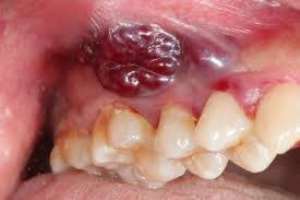
The sudden onset of Kaposi's sarcoma clusters among dark-skinned people in South Africa from 1949 onwards, provided the reason for striking examinations and apparent helpless interpretations.
As soon as the National Party came to power, the first edition of the 'South African Journal of Clinical Science' dedicated the first 25 pages to this comparatively quite an insignificant disease in March 1950, describing 41 cases.
Between 1911 and 1947, there was not a single case of Kaposi's sarcoma in South Africa, and only six cases of Kaposi's sarcoma in Southern Africa (South Africa, former Protectorate of Bechuanaland, former Rhodesia, Mozambique, former South West Africa.)
Oettle explains the rarity of Kaposi's sarcoma during the period 1911-1947: The diagnosis of Kaposi's sarcoma was missed by pathologist and clinician alike. However, he does not give any foundation for his reproach to support his claim that there had Always been a lot of Kaposi's sarcoma cases in South Africa.
No such numbers for South Africa were checked again afterward. Between 1949-1952, there were 86 cases, of which 82 were Bantus, and of these 63 were from Transvaal (approx. 15 per year.)
Besides this extraordinary rate among South Africans people, it also became remarkable that of the ten pale-skinned case who fell ill between 1942-1952, six of these were women, of whom five were Afrikaners, who were classified as 'Aryans.'
Since the hitherto known figures confirm that roughly 15 times more men than women suffer from Kaposi's sarcoma, these results of 1942-1952 can also be a pointer to a new form of spreading of the disease in South Africa.
A similar noticeable incidence among women was reported on from the South African province Natal from 1950-1956. 17 African men and eight women succumbed to the disease here.
From 1953-1955, the reported number of cases suddenly dropped spontaneously. There were 21 cases in South Africa and eight in Transvaal (less than three per year.)




 2024 elections: Resign if you can't be faithful to party - Sagnarigu NDC PC desc...
2024 elections: Resign if you can't be faithful to party - Sagnarigu NDC PC desc...
 Five arrested, remanded over alleged murder of two police officers at Transacco
Five arrested, remanded over alleged murder of two police officers at Transacco
 Tax exemptions better than incentives for churches – Tax Analyst tell Bawumia
Tax exemptions better than incentives for churches – Tax Analyst tell Bawumia
 Transport Minister sues Law Platform Editor for defamation
Transport Minister sues Law Platform Editor for defamation
 Voter registration: Police arrest NPP Treasurer for Mpohor for registering minor
Voter registration: Police arrest NPP Treasurer for Mpohor for registering minor
 "This nonsense must stop" — Lawrence Tetteh vows to march to Jubilee House over ...
"This nonsense must stop" — Lawrence Tetteh vows to march to Jubilee House over ...
 2024 elections: “If indeed you stand for peaceful elections the time is now for ...
2024 elections: “If indeed you stand for peaceful elections the time is now for ...
 I have the attributes to be president of this country — Bernard Monarh
I have the attributes to be president of this country — Bernard Monarh
 Cecilia Dapaah saga: ‘Turf war’ between AG, EOCO, OSP indicates they’re not ‘cor...
Cecilia Dapaah saga: ‘Turf war’ between AG, EOCO, OSP indicates they’re not ‘cor...
 Ghana will become the first African country to embrace blockchain-powered gover...
Ghana will become the first African country to embrace blockchain-powered gover...
